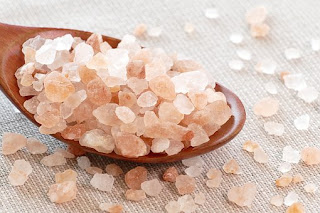The food we love to eat depends on the different tastes that we have. These tastes depend on the basic five different receptors in our taste buds of the tongue to sense what is sweet, salty, spicy or bitter.
Image credits Pixabay
Researchers in Okayama University, Tokyo have found that when we eat something the sensation of the food tastes activate the different receptors in the taste buds. The basic concentration at which human tongue senses salty taste is 100 mM. mM here denotes ‘Millimolar’. One millimolar contains 1 millimole per liter. A mole is a quantity of a substance which has a large number of atoms or molecules. When it comes to salt, higher concentrations of salt suppose 500 mM can produce a bitter or Salty taste. However concentrations below 10 mM produces a sweeter taste.
The chemicals in food and taste receptors in the taste buds of the mouth trigger specific taste sensations. In vertebrates, chemicals are divided into five basic types: sweet, umami, bitter, salty and sour. This sensation arises from the recognition of taste receptors. Humans perceive taste when proteins called taste receptors on the surface of the tongue are activated by food molecules. These receptors activate nerve cells that send signals to the brain that can be interpreted as sweet, sour, salty, bitter, or umami, depending on the receptor that is activated. Most single-backbone animals have the same five types of taste receptors for a group of chemicals that represent each taste modality.
Image credits Unsplash
In 2017, scientists analyzed the structure of the taste receptor from the fish which is the same as the sweet taste receptor in humans. Interestingly, part of this receptor, known as T1r2a/T1r3LBD, was bound to the chloride ion. Atsuko Yamashita tested whether chloride can stimulate neurons that send out a signal when food tastes sweet. To do so he used an approach known as electrophysiology. He measured the activity of these neurons in mice. The results showed that neurons become active when a solution containing low levels of chloride is placed on the mice’s tongues. In addition, when given a choice between plain water and water containing chloride, the mice seemed to prefer the chlorinated water. This confirmed that the mice recognized the sweetness of chloride by activating the sweet taste in Receptors and Neurons. Based on these results, researchers suggest that small amounts of salt can taste sweet because the chloride ions in salt activate sweet taste receptors and the neurons associated with them. Their results also suggest that animals perceive salt in a variety of ways, perhaps because a balanced salt content is essential for proper bodily function. Future experiments on human taste receptors could show how these traces help assess saltiness in humans.
If you enjoyed reading our articles, please consider supporting us by buying our geeky merchandise on Instagram.
Alternatively, you could Buy us a coffee or follow us on Facebook, Twitter, Pinterest or Medium!





